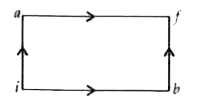A system is taken along different path in the graph of P→ V from its initial state to final state. Which of following quantity does not depend on the path of the system ?Solution in Gujrati
Exchange of heat Q
Work done W
Depend on Q but not on W
(Q - W)
The correct Answer is:D
Step by step video, text & image solution for A system is taken along different path in the graph of Pto V from its initial state to final state. Which of following quantity does not depend on the path of the system ? by Physics experts to help you in doubts & scoring excellent marks in Class 11 exams.
Topper's Solved these Questions
- BOOK - KUMAR PRAKASHANCHAPTER - THERMODYANMICS EXERCISE - Question Paper11videos
THERMODYANMICS
- BOOK - KUMAR PRAKASHANCHAPTER - THERMODYANMICS EXERCISE - Section-E MCQs42videos
THERMODYANMICS
- BOOK - KUMAR PRAKASHANCHAPTER - THERMAL PROPERTIES OF MATTEREXERCISE - Question Paper (Section - D) (Answer following in brief :) Each carry 4 marks1videos
THERMAL PROPERTIES OF MATTER
- BOOK - KUMAR PRAKASHANCHAPTER - UNITS AND MEASUREMENTEXERCISE - Section -F (Questions from Module )20videos
UNITS AND MEASUREMENT
Similar Questions
Why is a steam burn more damaging than a burn with boiling water of the same ?
02:05View SolutionHeat absorbed by the gas undergo a cylic process along closed path in one complete cycle as shown in figure will be _____ J.
 View Solution
View SolutionIn an experiment on the specific heat of a metal, a 0.20 kg block of the metal at 150∘C is dropped in a copper calorimeter (of water equivalent 0.025 kg) containing 150 cm3 of water at 27∘C. The final temperature is 40∘C. Compute the specific heat of the metal. If heat losses to the surroundings are not negligible, is your answer greater or smaller than the actual value for specific heat of the metal ?
02:16View SolutionIf the error in measurement of radius of a shpere is 2% then the error in determination of volume of the sphere will be …………
03:26View SolutionWhen a system is taken from state i to state f along the path iaf, it is found that Q=50 cal and W=20 cal . Along the path ibf Q=36cal . W along the path ibf is
02:54View SolutionA system is changed from initial state to final state in such a manner that ΔH=q . If the same change from initial state to final state were made by different path , which of the following statements are correct?
02:35View SolutionA system is taken from state A to state B along two different paths 1 and 2 . The heat absorbed and work done by the system along these two paths are Q_(1) and W_(1) and W_(2) respectively.
01:30View SolutionA system is changed from an initial state by a manner so that ΔH=q. If the change from the initial state to the final state were made by a different path, would ΔH and q be the same as that for the first path?
View SolutionAssertion: Both ΔH and ΔU are state functions.
Reason : A state function depends only on the initial and final states of the system and is independent of the path.View SolutionA system is changed from an initial state to by a process such that ΔH=q. If the change from the initial state to the final state were made by a different path, would ΔH and q be the same as that for the first path?
04:48View SolutionA system is taken from state "A" to state "B" along two different paths,"1" and "2." The heat absorbed and work done by the system along these two paths are Q1 and Q2 and W1 and W2 respectively
02:34View SolutionWhen a system is taken from state I to state f along the path iaf, it is found that Q = 50 cal and W = 20 cal. Along the path ibf, Q = 36 cal. W along the path ibf is
 02:22View Solution
02:22View SolutionA system is taken from a given initial state to a given final state along various paths represented on a P-V diagram. The quantity that is independent of the path is
02:14View SolutionA system is taken to its final state from initial state in hypothetical paths as shown in the figure. Calculate the work done in each case.
View SolutionA system is taken from a given initial state to a given final state along various paths represented on a P-V diagram. The quantity that is independent of the path is
06:07View Solution

